This kaiseki restaurant is run by Its head chef Nobuharu Yamanura, who opened the restaurant in April 2003. He trained for 15 years at Kikusuiro, a traditional and exclusive ryokan in Nara, working his way up to head chef. He also worked for Aji Kiccho, a restaurant in Shinsaibashi, Osaka, for three and half years. Mr Yamamura has an interest in ceramic arts ears and has commissioned the artist Tsuboshima Dohei to produce the plates for the restaurant, each dish being served on a specially selected plate.
Wa Yamamura is situated in a quiet part of Nara, which was the capital of Japan prior to Kyoto (the city was established in 710, and is a very interesting place to visit if you have some time). The small restaurant had a bar counter with seating along one side of the room and tables opposite, these being separated into little sections by curtains. As usual in Japan, decoration was minimal, with a framed print of calligraphy on one wall.
The meal began with raw scallops with vinegar sauce, spring onion and radish, served with a welcome dish of sake. The scallops were excellent, sweet and palpably fresh, and the light vinegar sauce worked well with them (16/20). Next came a dashi soup with steamed fish dumping and crab, with a little sprouting broccoli providing some colour. The stock was subtle, the dashi flavour not too strong, the fish dumpling pleasant if a little bland (15/20). Sashimi was served on a bowl of ice: deep water shrimp was lovely, with superb flavour, flat fish pleasant, and otoro tuna gloriously fatty. Real wasabi root was served with the sashimi (16/20).
At this stage a tray appeared with a series of further little dishes, set out attractively with a pair of miniature lamps to enhance the display. Celery in sweet vinegar was excellent, the vinegar balance well judged. Tomatoes marinated in wine were pleasant, though I had better tomatoes a couple of days prior to this in Kobe. Sesame tofu was made with kudzu powder (a root starch), alongside green onion with vinegar miso dressing. There was a whelk in urchin paste, a couple of broad beans, an interesting steamed egg with fish paste, and a very good fried prawn with a thin crisp of fried fish skin (16/20 overall).
This array of dishes was followed by grilled tilefish with courgettes and udo, a Japanese vegetable. The fish was nicely cooked, as were the vegetables, though this was not a dish that could be accused of having bold flavours (16/20). This was followed by tempura of a white fish called shirauo, which is known as Japanese anchovy but is more like whitebait. This was served alongside a tempura of hodoimo (a root) and tarone (the bud of a tree). All very pleasant, though the batter itself was not quite as delicate as some I have eaten at specialist tempura restaurants (15/20).
This was followed by a cold dish of Japanese bay scallops, shrimp and bean curd skin with lemon vinegar jelly. Again the quality of the scallops was very high, the jelly an interesting idea, imparting a gentle hint of acidity to balance the sweetness of the scallops (16/20). At this stage pickles and a bowl of rice with bamboo shoots arrived, signifying the end of the savoury courses. Dessert was a strawberry jelly with a little glass of orange juice. The jelly was delicate and the strawberries had good flavour, though not quite as good as some others I had eaten a few days earlier (15/20).
The bill came to ¥11,720 for two, which works out to just £64 a head including beer. Not bad for a nine course tasting menu at a three Michelin starred restaurant. Service was very friendly, and one of the young waitresses spoke good English. Overall I would say that the food here is not quite up there with the top kaiseki places in Kyoto, but it is certainly very good, and at a fraction of the price.

-
 chef
chef

-
 counter
counter

-
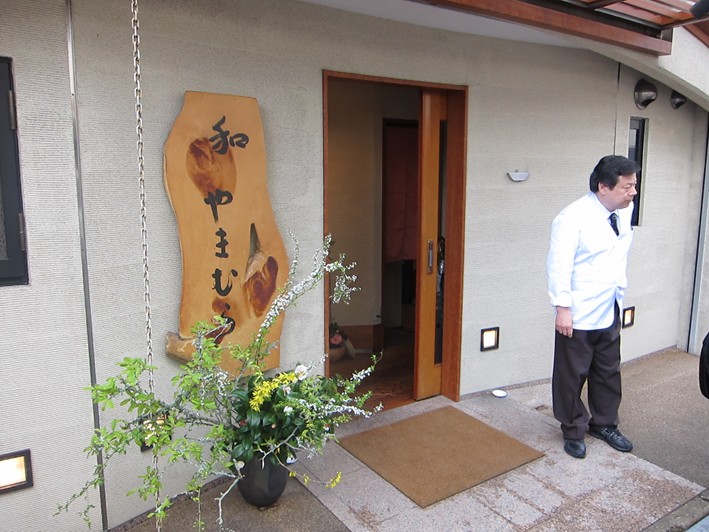 entrance
entrance

-
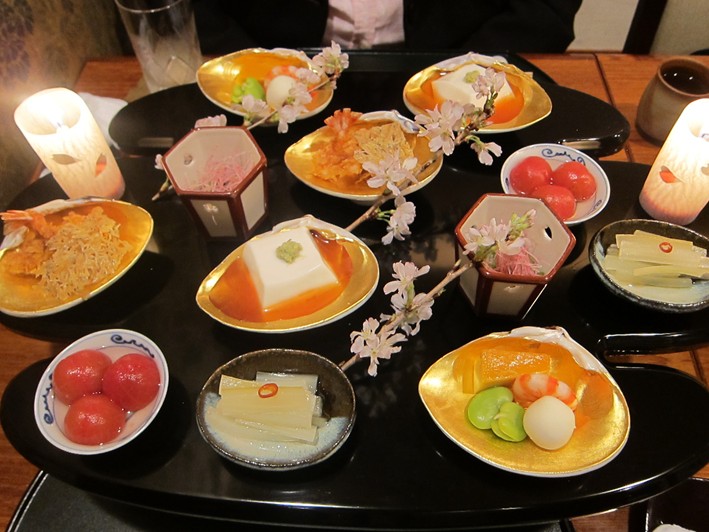 nibbles
nibbles

-
 sashimi
sashimi

-
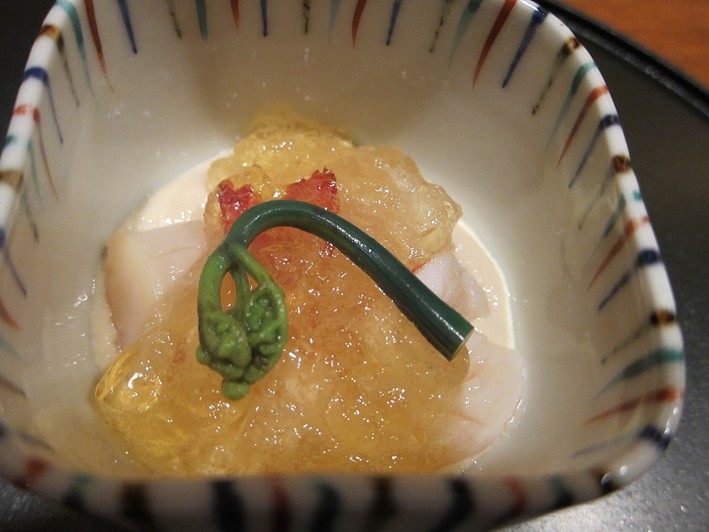 scallops and bean curd skin
scallops and bean curd skin

-
 scallops
scallops

-
 soup
soup

-
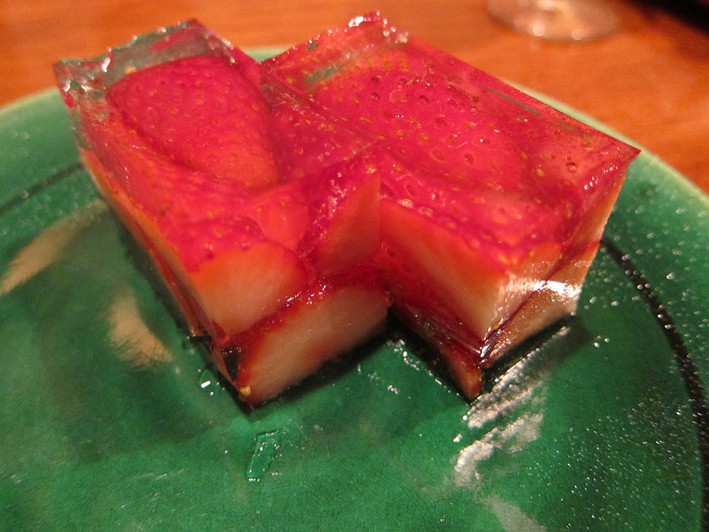 strawberry jelly
strawberry jelly

-
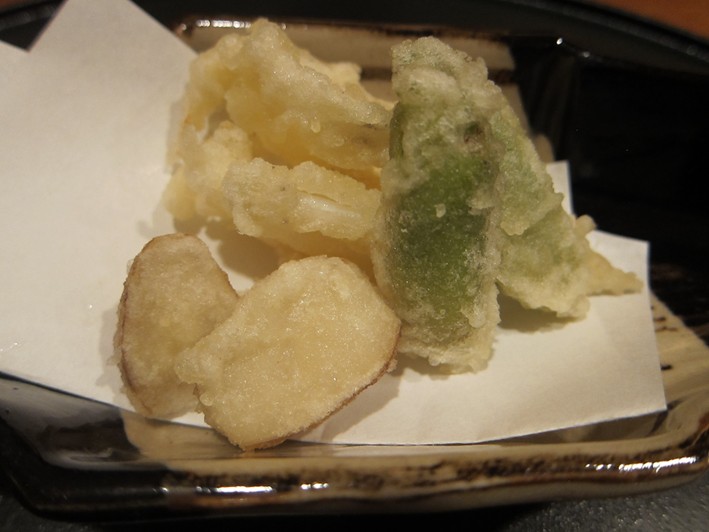 tempura
tempura

-
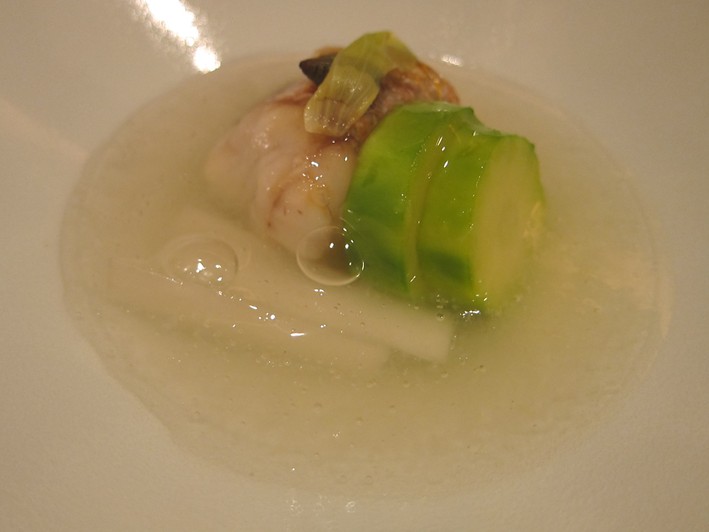 tilefish and courgettes
tilefish and courgettes

-
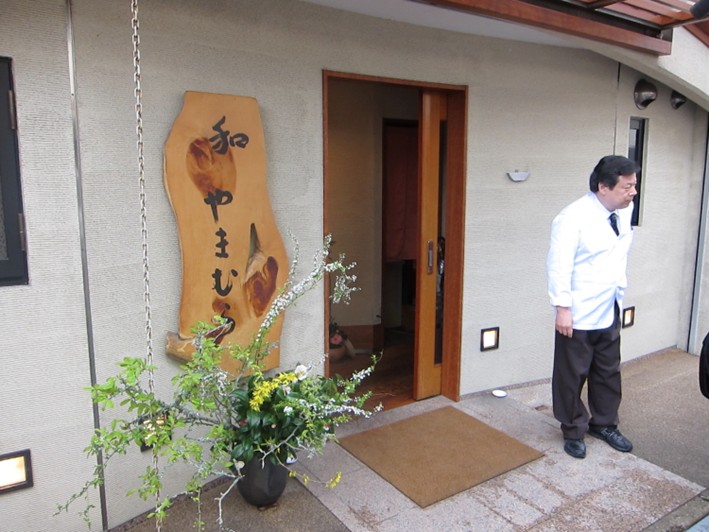 chef at entrance
chef at entrance

-
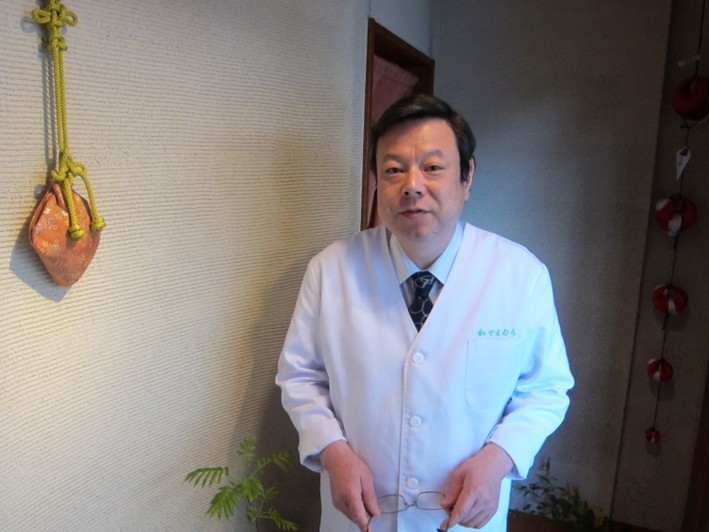 head chef
head chef

-
 tempura of shirauo
tempura of shirauo

Japanese cuisine
 Average Price £85
Price I paid £64
Value for money
££££££
Overall rating 15/20
Average Price £85
Price I paid £64
Value for money
££££££
Overall rating 15/20

The type of cuisine served at this restaurant
Typical price for three courses and modest wine
What I actually paid on this particular visit
Calculated from overall rating/average price: £££££ is best, £ least good
Score for the food from 1 to 20, with 20 being world class















Add a comment
Thank you for submitting your comment, this will be checked and added to the website very soon.
User comments